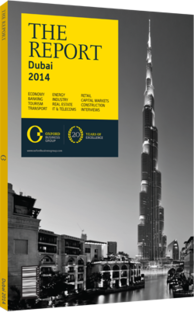Desalination’s the word: An expansion in production capacity will meet growing demand
Annual growth of up to 5% in energy demand has been projected by the Dubai Electricity and Water Authority (DEWA) through 2030, reflecting the pace of industrial and economic growth in Dubai. To meet this increased demand, production capacity, transmission and distribution networks have all been expanded. The priority given to energy efficiency and sustainable growth by constituent members of the Dubai Supreme Council of Energy, including DEWA and Dubai Aluminium (DUBAL), has been factored into every stage of expansion. Achieving optimum power plant design is the first step towards developing efficient generation capacity. The most common co-generation plant design found in the UAE suits this dual-purpose energy strategy by securing the supply of both electricity and water in as efficient and sustainable a manner as possible.
Power Plants
The single-largest energy consumer in Dubai, Emirates Global Aluminium, was created from the merger of DUBAL and Emirates Aluminium, and has adopted a policy of operating either combined-cycle power plants or co-generation power plants. In order to benefit from fuel-free steam turbines, open-cycle units have been avoided. DUBAL had also gone to great lengths to increase efficiency with new furnaces, regenerative burners, evaporative cooling, co-generation and other technical improvements at its captive power station (2350 MW at 30 ̊C) and sea water desalination plant (30m imperial gallons per day, MIGD) used to service the largest single-site aluminium smelter in the region. The installation of regenerative burners in three furnaces is expected to lead to around 9800 tonnes of CO emission reductions per year.
Through the use of optimisation processes such as multi-flush distillation and co-generation, DUBAL’s unique $183m GTX Cogeneration Plant centralised steam heat energy distribution to generate a zero-emission power augmentation of 147 MW. DEWA’s “M Station” for electricity generation and water desalination was built with similar goals in mind. The Dh10bn ($2.72bn) gas-fired plant was the UAE’s largest power production and water desalination facility when it opened in April 2013, generating 2060 MW of electricity and 140 MIGD of desalinated water with efficiency measures at 82.4%. Its flexibility allows operators to adjust the amount of feedstock used to meet their demands with a minimal carbon footprint.
Building Capacity
Dubai’s boost of 10.6% to DEWA’s generation capacity has raised the emirate’s total production to 470 MIGD of desalinated water and 9646 MW of electricity, enough to cope with future water and electricity requirements for at least the next five years, according to DEWA’s CEO, Saeed Mohammed Al Tayer. A short-term surge in demand for electricity that exceeds reserve margins can be met by more capacity in the national power grid or by new domestic turbines that can be put into operation at short notice.
The plant’s six F-class gas turbines each generate 234 MW. Hot exhaust gases are fed through heat-recovery boilers to produce steam used in three 218-MW steam turbines and eight multi-stage flash desalination units of 17.5m gallons per day. In the event that principal and back-up natural gas lines fail, the plant is also equipped with gas turbines that are capable of burning diesel stored on-site in sufficient quantities to keep the blades turning for 10 days. Plans to add two further natural gas turbines to the facility in a project that may start in 2014 could contribute another 400 MW of generation capacity. However, there has as of yet been no definitive confirmation of the cost of the expansion or a schedule for the utility to seek financing. M station’s contribution to the energy mix was a mitigating factor in the decision taken by DEWA to indefinitely postpone its plans to build the $1.3bn, 1600-MW Hassyan power and water project in April 2012. Authorities cited increased efficiency at existing plants amid weaker demand as justification for the decision.
This project was Dubai’s first use of the public-private partnership model that funded the construction of a project, and was planned to be 51% owned by DEWA and 49% by one of the four bidding consortia.
You have reached the limit of premium articles you can view for free.
Choose from the options below to purchase print or digital editions of our Reports. You can also purchase a website subscription giving you unlimited access to all of our Reports online for 12 months.
If you have already purchased this Report or have a website subscription, please login to continue.

